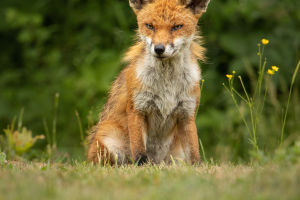The cheetah is an iconic big cat known for its incredible speed, reaching over 120 kilometers per hour and making it the fastest animal on land.
These animals have long tawny fur with black markings, allowing them to blend seamlessly into grassland environments. However, despite their impressive adaptations, cheetahs are currently facing an endangered situation.
One of the main reasons for this is habitat destruction. Cheetahs are primarily found in the grasslands, semi-deserts, and hills of Africa and Asia, but human activities such as urbanization and agriculture have caused significant damage to their habitats.
As humans continue to encroach on cheetah territories and exploit their food sources, their survival is increasingly threatened. Cheetahs are struggling to adapt to these changes, and their population numbers are dwindling.
And Lions are the cheetah's biggest competitor and will often attack and kill cheetah cubs. Although cheetahs have amazing speed and agility, they usually do not have an advantage in a fight with lions.
In lion territory, cheetahs often have no choice but to stay away from these fierce animals. However, even if the cheetah cubs leave the lion's territory, they may face threats from other predators, such as jackals and hyenas.
Another reason for their endangerment is the reduced supply of prey. Cheetahs rely on antelopes as their main source of food, but overhunting by humans has drastically reduced the antelope population.
With population growth and urbanization, humans continue to develop farmland and pastures, which further reduces the cheetah's prey and makes survival even more challenging. Additionally, human activities have reduced the area of grasslands, indirectly affecting the prey population of cheetahs and increasing the survival pressure on these big cats.
The cheetah's genetic diversity has also been significantly reduced due to over-hunting and improper handling. In the past centuries, the cheetah population has been drastically reduced, leaving them vulnerable to extinction.
Despite some conservation efforts, the measures taken now are inadequate to protect their genetic diversity. Reduced genetic diversity means that the cheetah's adaptability will decrease, which lays the groundwork for future survival challenges.
Although cheetahs are adaptable animals, human activities have irreversibly impacted their habitat. Over-exploitation has led to a reduction in their population, making it difficult to maintain the ecological balance of cheetahs in their natural environment.
Thus, the conservation of cheetahs, their habitat, and their genetic diversity need to receive worldwide attention and action.
To protect this valuable species, we must take effective measures. The first step is to protect their habitats from further destruction by promoting sustainable development and conservation efforts. Secondly, we need to promote responsible hunting practices to ensure that the antelope population, the primary prey of cheetahs, remains healthy.
We must focus on protecting and increasing the genetic diversity of cheetahs to ensure their long-term survival.
Cheetahs are a remarkable big cats and an important part of our ecosystem. However, their endangerment is a result of human activities that continue to damage their habitats, deplete their food sources, and reduce their genetic diversity.
We must take urgent action to protect these animals and ensure their survival for generations to come.


